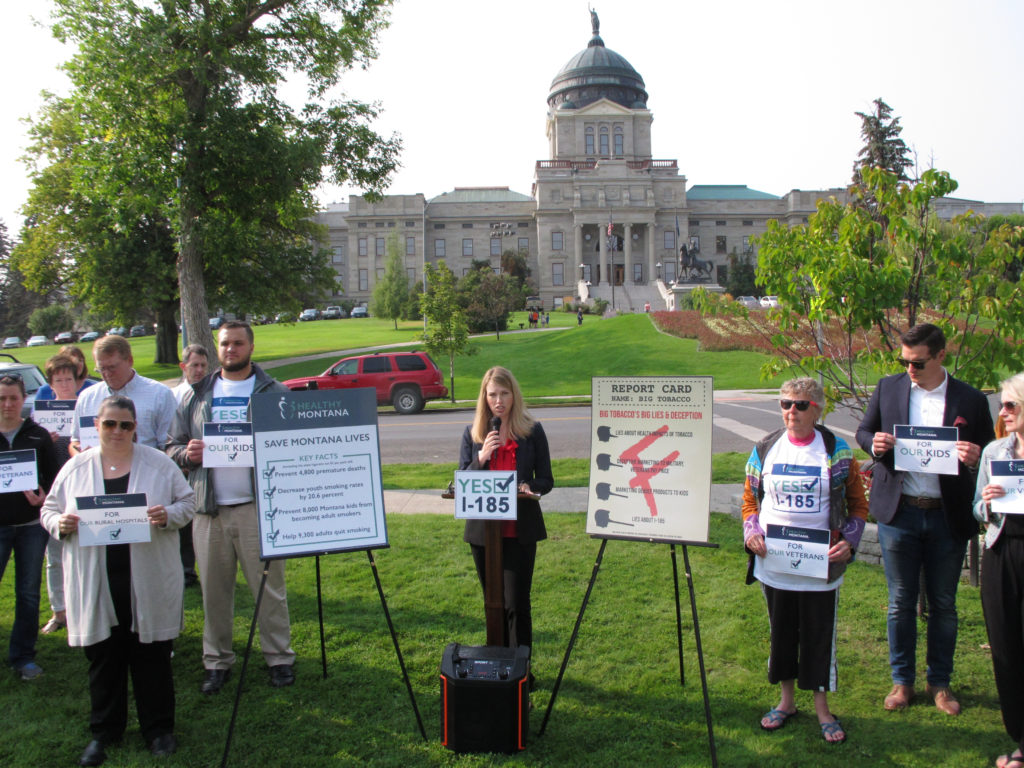Highlights of the $330 billion-plus bill to avoid shutdown

It’s not just about President Donald Trump’s border wall. The border security issues that sparked a 35-day government shutdown are but one element of a massive $330 billion-plus spending measure that wraps seven bills into one, funding nine Cabinet agencies, including the departments of Justice, State, Agriculture, and Commerce. It also contains a variety of other provisions, touching on Medicaid, pesticides and even the permitted length of sugar beet trucks in rural Oregon. While full details haven’t been released, highlights are expected to include: A BILLION HERE, A BILLION THERE Most of the bill deals with spending minutia such as a $1 billion increase to gear up for the 2020 census, an almost 4 percent budget increase for NASA and an $11.3 billion budget for the IRS. Most agencies are kept relatively level compared to last year, and the measure rejects big spending cuts — such as a $12 billion cut to foreign aid and the State Department — proposed by Trump. ___ FEDERAL EMPLOYEE PAY Trump has proposed a pay freeze for civilian federal employees, but the measure would guarantee those workers a 1.9 percent increase, according to No. 2 House Democrat Steny Hoyer of Maryland. The military got a 2.6 percent increase in legislation that passed Congress last year. ___ FLOOD INSURANCE The government’s troubled federal flood insurance program would be extended through Sept. 30 to give lawmakers time to reauthorize the program. The program expired last year but has been temporarily extended in order to avert disruptions in the housing market. ___ ODDS AND ENDS Since the bill is a must-pass vehicle, it’s serving as a locomotive to pull a host of miscellaneous provisions into law. There’s an extension of a Medicaid provision on home- and community-based nursing care, grants for the poor under the Temporary Assistance for Needy Families program and funding fixes to a trust fund that finances dredging and maintenance or ports and harbors. For fans of the truly obscure, there’s a provision to exempt sugar beet trucks in rural Oregon from length limits. Republished with permission from the Associated Press
Alabama’s Medicaid agency says it needs less money

The head of Alabama’s Medicaid agency says it will need less money in the coming year. News outlets reported Medicaid Commissioner Stephanie Azar told state lawmakers Wednesday that Medicaid is asking for $715 million for the coming year. That’s $40 million less than the current year. Azar said it has about $106 million to take into the 2020 budget year, avoiding the need for extra money next year while still meeting the $821 that will be needed. She says benefits from the federal budget have helped the state, citing drug rebates, Medicare Part B and the tobacco trust fund. “Things have just been really going well as far as things we have limited control over, plus we’re driving a lot of efficiencies in our program,” Azar said. “That was some good news from Medicaid today, with some carry-over money they’re going to have,” House General Fund budget chairman Steve Clouse, Ozark-Republican, said. “Less expenditures on pharmacy cost. Enrollment has stabilized, continuing to stabilize and even go down a little bit.” The federal government pays 70 percent of the cost of Medicaid. The state has to come up with 30 percent share and state lawmakers have used some of the BP oil spill settlement to cover part of the cost previously. Medicaid covers more than 1 million people in Alabama, mostly children, the elderly and the disabled. The program plays a major role in funding hospitals and the offices of pediatricians. The legislative session begins March 5. Republished with permission from the Associated Press.
Jim Carnes: It’s time for Alabama to go big and expand Medicaid

Alabamians expect to hear a lofty, future-oriented vision from their governor every four years during the inaugural address. Gov. Kay Ivey, speaking in Alabama’s bicentennial year, rose to this historic occasion in many ways last week. But her speech omitted one huge issue that our state should address this year: Medicaid expansion. Alabama’s quadrennium – the four-year cycle for election of all executive officers and legislators – lends a rhythm to the governing process. Election years, like 2018, typically see little bold action, as lawmakers position themselves for campaign season. But “first” years, like 2019, are often a prime opportunity to go big and tackle long-term problems. Ivey took the long view in many areas, committing to strong education funding and seeking serious investment in Alabama’s infrastructure. “Improving our infrastructure is more than an investment in our roads and bridges,” Ivey said. “It’s an investment in economic development, public safety and local communities.” These investments are critically overdue, and few could argue otherwise. But a limited definition of infrastructure – roads, bridges and prisons – would fall short of the bold vision that our state needs to prosper as it enters its third century. Alabama’s health care infrastructure needs a major boost as well, and Ivey has the power to provide one. Governor, it’s time to go big. It’s time to expand Medicaid. Already, 36 states – including Arkansas, Kentucky and Louisiana – have accepted federal support to expand Medicaid coverage to people making up to 138 percent of the federal poverty level. (That’s about $17,000 a year for an individual and around $35,500 for a family of four.) But Alabama is part of the rapidly shrinking minority of states that haven’t. This inaction is causing pain and hardship across our state. An estimated 300,000 Alabamians caught in the coverage gap – who earn too much to qualify for Medicaid but too little to qualify for subsidies for Marketplace coverage – are just one medical emergency away from financial ruin. And more and more rural communities are at risk of losing local hospitals, as seven already have in this decade. Failure to expand Medicaid is holding back Alabama’s economy as well. Our state is forfeiting hundreds of millions of dollars in annual federal funding to shore up our health care system. This money would support tens of thousands of jobs and stimulate more than $1 billion a year in economic activity. Alabama is weakening its infrastructure – and its future – by leaving health care out of the equation. Ivey is right to call for infrastructure investment. But that investment should address a wide range of our state’s needs. We need roads and bridges – and public transportation – that link people to good-paying jobs in vibrant communities that offer the health care they need. We need schools equipped to prepare our children for careers in health care and other growing fields. We need a broadband network that delivers telemedicine across the Black Belt and other rural regions. We need accessible and effective substance abuse services to lighten the burden on law enforcement and corrections. We need policies to attract more medical professionals to small towns, improving quality of life and making those areas more appealing for industrial recruitment. We need health coverage to strengthen low-income families and promote a more productive workforce. Across the country, Medicaid expansion is driving transformation in all of these arenas and more. Ivey’s inaugural speech laid out a vision for a prosperous future for Alabama. There’s no better way to jumpstart our state’s third century than by expanding Medicaid. ••• Jim Carnes is policy director of Alabama Arise, a nonprofit, nonpartisan coalition of congregations, organizations and individuals promoting public policies to improve the lives of low-income Alabamians. Email: jim@alarise.org.
Greg Reed: Now, a Medicaid program built around families and communities

The elections of November 6th are over, and now, in Washington and in Montgomery legislators again take up the task of governing. As the leader of Alabama’s twenty-seven Republican state senators, my focus is on working with other lawmakers and Governor Kay Ivey to make state government more efficient and to keep job growth strong. Reforming the state’s Medicaid program is one of the toughest challenges we face in the coming year. Medicaid, the federally-mandated health insurance program for pregnant women, children, low-income adults, the elderly, and the disabled, is by far the largest line item in the state’s General Fund — Medicaid by itself accounts for 37 percent of all non-education state spending and its budget for the current year is $755 million. For context, state prisons consume 23 percent and the Alabama Law Enforcement Agency (state troopers) uses 2.5 percent of non-education spending. The aging of America’s population as the Baby Boomers retire puts enormous stress on government-run health insurance programs like Medicaid. About 10,000 Boomers retire every day, and the U.S. Census Bureau predicts that by 2035, the number of adults aged 65 and older in America will outstrip the number of children under the age of 18. In Alabama, the population of folks aged 65 and older is expected to grow by 25 percent between now and 2025. This coming demographic tidal wave threatens to swamp a number of government programs, including Medicaid. For the past five years, I have worked with Medicaid Commissioner Stephanie Azar to craft a new health care model that better serves the growing number of senior citizens in Alabama who are in Medicaid’s long-term care. Thankfully, this year Alabama received approval from the Centers for Medicare and Medicaid Services in Washington to move ahead with the Integrated Care Network (ICN). This reform will offer senior citizens on Medicaid additional health care choices and is projected to save, over the long run, tens of millions of taxpayer dollars. Here is how the ICN will work: in October of this year, the state Medicaid agency partnered with an Alabama health care provider that will now serve the medical needs of the 23,000 senior citizens who are receiving Medicaid’s long-term care services, 70% of whom are in nursing homes. By partnering with an expert health care provider based in Alabama, Medicaid can offer its long-term patients better care — and thus allow more Medicaid recipients to stay longer in the comfort of their own home. Medicaid recipients can still opt for a nursing home, and no benefits are changed under this new system. But by partnering with a health care provider that is an expert in managed care, Medicaid can bend the cost curve down, offer improved health care, and give more of Alabama’s senior citizens an opportunity to stay a little longer in their homes and communities. For my wife and me, one of the greatest privileges in life is spending time with our parents — and as the years have passed, we, like so many Alabama families, have discussed the future and begun to plan for the day when our parents will need additional help. As a legislator, I think often about how the policies that I vote on will affect the lives of my friends and neighbors. The Integrated Care Network is just getting started, but I am optimistic that this reform will improve the quality of life for many families in Alabama and put Medicaid on a sounder financial footing. ••• Jasper-Republican, State Sen. Greg Reed is the Alabama Senate Majority Leader and represents Senate District 5, which is comprised of all or parts of Winston, Walker, Tuscaloosa, Jefferson, and Fayette counties.
Ballot initiatives buck legislatures in GOP-leaning states

Marijuana legalization. An increase in the minimum wage. Expansion of Medicaid. Come Election Day, voters in a batch of Republican-dominated states will weigh in on these and other liberal or centrist proposals that reached the ballot after bypassing state legislatures. Pushed forward via signature-gathering campaigns, these measures offer a chance for voters to do things their GOP-run legislatures oppose. Many are considered to have a good chance of passage. In four of the states — Florida, Missouri, Montana and North Dakota — the ballot measures might have some effect on closely contested U.S. Senate races. Even a slight boost in turnout among liberal-leaning voters could help Bill Nelson, Claire McCaskill, Jon Tester and Heidi Heitkamp, the endangered Democratic incumbents in those states. Missouri is notable this year for having three left-leaning proposals on its ballot — raising the minimum wage, legalizing marijuana for medical purposes and changing the congressional redistricting process so that it is potentially less partisan. The minimum-wage measure might have special appeal to low-income voters from Kansas City and St. Louis, where efforts to raise pay locally were thwarted by the Legislature last year. Among those dismayed by the Legislature’s move was the Rev. Starsky Wilson, who heads a social services foundation in St. Louis. He also co-chaired a commission that investigated economic and social inequality after the racial unrest provoked by the 2014 killing of Michael Brown by a police officer in Ferguson. “When the Legislature pre-empted, it showed what lengths folks will go to thwart the will of the people,” Wilson said. “These were unfortunate actions of some legislators who don’t seem to care about the poor and also don’t seem to care about democracy.” Most of the financing for the minimum wage campaign has come from a Washington-based liberal organization, the Sixteen Thirty Fund, which has backed campaigns in other states. The wage increase is opposed by Associated Industries of Missouri and the Missouri Chamber of Commerce and Industry, which say it will raise the cost of doing business and possibly reduce the number of entry-level jobs. However, more than 350 Missouri businesses have announced support for the increase. The measure would gradually raise the state’s $7.85 minimum wage to $12 an hour, starting with a boost to $8.60 in January. St. Louis Mayor Lyda Krewson said that the current wage is not high enough and that even the bump in January might not do much for many minimum-wage workers. “But it’s a move in the right direction,” she said. St. Louis had raised its minimum to $10 an hour before the legislature banned local governments from setting wages that were higher than the state’s. Dave Robertson, a political science professor at the University of Missouri-St. Louis, said the ballot measures might have only a marginal effect on turnout. “That said, the marginal votes could make a huge difference in the Senate race because everyone expects it to be dead even,” he said, referring to McCaskill’s effort to repel a strong challenge from Republican Attorney General Josh Hawley. Aside from Missouri, other GOP-controlled states with liberal- or centrist-backed measures on the ballot include: Arkansas, to raise the state minimum wage from $8.50 an hour to $11 by 2021. Idaho, Nebraska and Utah, to expand Medicaid coverage to more residents. Montana, to raise tobacco taxes to extend an existing Medicaid expansion. North Dakota and Michigan, to legalize recreational use of marijuana, a step already taken by nine other states. Utah, to legalize medical use of marijuana. Michigan and Utah, to change the redistricting process, an issue also on the ballot in swing-state Colorado. Florida, to restore the right to vote for most people with felony convictions upon completion of their sentences. The proposed constitutional amendment needs the support of 60 percent of voters to prevail; if that happens, an estimated 1.4 million Floridians could regain the right to vote. The Democrats in Florida’s two highest-profile election contests support the amendment — gubernatorial candidate Andrew Gillum and Bill Nelson, who is seeking a fourth term in the U.S. Senate. Nelson’s GOP opponent, Gov. Rick Scott, opposes the amendment, as does Ron DeSantis, the Republican seeking to succeed Scott as governor. Daniel Smith, a University of Florida political science professor, said public support for the amendment appears to be strong, possibly providing a modest boost to Gillum and Nelson. “It’s not going to help the Republicans at all,” Smith said. “Will it help the Democrats? It could, at the margins.” The partisan pattern is reversed in two Democratic-leaning states, Oregon and Massachusetts, where conservatives are using the initiative process in a bid to overturn existing state policy. The target in Massachusetts is a 2016 law extending nondiscrimination protections to transgender people in their use of public accommodations. Conservatives in Oregon are targeting two policies — one that allows use of state funds to pay for low-income women’s abortions, the other forbidding law enforcement agencies from using state resources or personnel to arrest people whose only crime is being in the U.S. illegally. Craig Burnett, a political science professor at Hofstra University, views the initiative process as a valuable tool for citizens disenchanted with their legislature. “If it’s legislating much too far from where the people are in any direction — conservative or liberal — the initiative is one way to move it back to where the people are,” he said. In all, there will be 157 measures on the Nov. 6 ballot in 37 states. As usual, most of the measures were placed on the ballot by state legislatures; there are 65 measures resulting from citizen campaigns. In some states, initiatives have met with strong resistance, either from the legislature or powerful interest groups. In Arizona, after a six-day strike by tens of thousands of teachers, they and their allies gathered enough signatures to place a measure on the ballot that would boost school funding by raising taxes on the wealthy. The Arizona Supreme Court blocked the initiative after the state’s Chamber of Commerce and others
Study: Without Medicaid expansion, poor forgo medical care

Low-income people in states that haven’t expanded Medicaid are much more likely to forgo needed medical care than the poor in other states, according to a government report released Monday amid election debates from Georgia to Utah over coverage for the needy. The nonpartisan Government Accountability Office worked with the National Center for Health Statistics to analyze federal survey data from 2016. The research focused on low-income adults ages 19-64 in states that did not expand Medicaid under the Obama-era Affordable Care Act, compared to their peers in states that did. Medicaid expansion is an issue in several high-profile gubernatorial contests and in states where supporters have gotten referendum questions on the ballot. Under the law, states may expand Medicaid for low-income people making up to roughly $16,750 for an individual or $34,640 for a family of four. Seventeen states have not adopted the expansion, opposed by many — but not all — Republicans. Among the report’s findings: Nearly 20 percent of low-income people in states that did not expand Medicaid said they passed up needed medical care in the past 12 months because they couldn’t afford it. That compared to 9.4 percent in states that expanded the program. About 8 percent of those in states that did not expand Medicaid reported they either skipped medication doses to save money or took less medication than prescribed. That compared to about 5 percent in states that expanded. For people with chronic conditions such as high blood pressure, diabetes and asthma, staying on a medication schedule is considered essential. About 22 percent of those in states not expanding Medicaid said they needed but could not afford dental care, as compared to 15 percent of similar low-income adults in expansion states. About 11 percent of those in non-expansion states said they needed to see a specialist but weren’t able to afford it, as compared to about 6 percent of those in expansion states. “States around the country have an opportunity to expand Medicaid to more people; these findings help show why it’s a winning proposition for states and the millions of Americans currently left out,” said Sen. Ron Wyden, D-Ore., who requested the analysis. Aides to Wyden said the 70-page report is the most detailed look yet at real-world differences that Medicaid expansion can make. In states that did not expand Medicaid, low-income adults are more likely to be uninsured. Medicaid is a federal-state program that has grown to cover about 1 in 5 U.S. residents, from many newborns to severely disabled people to elderly nursing home residents. Its total cost is about $570 billion a year. Former President Barack Obama’s health care law expanded Medicaid to allow states to cover low-income adults with no children living at home. On Election Day, voters in Idaho, Nebraska and Utah will decide whether their states should expand the program. Montana voters will decide on maintaining that state’s expansion. Expansion also is an issue in gubernatorial races in Florida, Georgia and Wisconsin, which have not expanded Medicaid. With the federal government covering at least 90 percent of the cost, expansion proponents argue states turning it down are leaving on the table tax dollars their own citizens send to Washington. Backers include hospital systems and health insurers, and many local business groups. Opponents contend that the cost is still too high for states, which have other major financial responsibilities for health care, education, infrastructure and law enforcement, and must balance their budgets. President Donald Trump‘s administration is strongly opposed to Medicaid expansion and tried unsuccessfully to repeal it during Trump’s first year. Medicare and Medicaid administrator Seema Verma argues that Medicaid was originally intended as a safety-net program for the most vulnerable in society and covering able-bodied adults is beyond its scope. Verma is encouraging states to set work requirements for Medicaid, contending that will encourage people to earn their way out of poverty and dependence on government insurance. Supporters of Medicaid expansion say the argument for the program is getting stronger. “It’s the same as we’ve seen more broadly with the ACA,” said Judy Solomon of the Center on Budget and Policy Priorities, which advocates for low-income people. “It’s here to stay and states that haven’t been able to get it over the finish line are questioning themselves.” Republished with permission from the Associated Press.
Gerald Dial: Alabama should expand Medicaid

I was born in Delta, Alabama, and I have spent the majority of my life in Lineville, working as a teacher, a coach, and as a state senator in the Alabama Legislature. I served my country in the Alabama National Guard as a Brigadier General and have a strong sense of duty for the state of Alabama. I know the joys and the challenges of life in rural Alabama, and I am committed to keeping our rural areas strong. As a retiring legislator and a former chairman of the State Senate Health Committee, I can appreciate the struggles our lawmakers face in trying to fund key state services. However, I also understand the importance of quality health care in our local communities, and I believe that by not expanding Medicaid we are missing a huge opportunity to strengthen our local economies. For years, we have used state dollars to recruit industries to locate in Alabama, and we have been very successful. We now have an opportunity to support existing health care jobs and make sure every Alabamian has access to care when they need it, and where they need it. Investing in Medicaid expansion will keep our rural hospitals open, save hundreds of local jobs, and provide basic insurance coverage to almost 300,000 Alabamians. These are our friends and neighbors, hardworking Alabamians who don’t earn enough to afford health insurance. They work in our local restaurants, in our local retail shops and build our houses. Medicaid expansion would enable them to continue working while keeping their family healthy. What happens if Alabama passes up this opportunity? More hospitals will close. Already, six rural hospitals have closed since 2011, and 88 percent of the remaining rural facilities continue to operate but are losing money every day, providing care to thousands of un-insured individuals. Many have had to eliminate services, cut staff and, if nothing changes, a number of them will likely have to close their doors. And when a community loses its hospital, it also loses doctors, pharmacies, and other providers, devastating the community not only in terms of access to health care, but in job and economic losses. I realize we don’t have all the answers on how Medicaid expansion will be funded. But I do know that for every $1 the state invests, the federal government will return $10 to the state. That’s a good deal for Alabama and one that we can’t afford to pass up. And remember, that federal funding comes from tax dollars we are already sending to Washington, dollars currently funding expanded Medicaid programs in 33 other states and in Washington, D.C. Instead of sending our money out of state, let’s invest that money in Alabama’s health care industry. We’ve got to find a way to keep our state’s health care system viable. I urge all Alabamians to find out more about Medicaid expansion and the tremendous benefit it will have, particularly in our rural areas. I’m afraid that the cost of doing nothing is too great. ••• Gerald Dial represents District 13 in the Alabama State Senate, which includes all or parts of Randolph, Lee, Cleburne, Clay, Cherokee, and Chambers counties.
High uninsured rates plague Alabama’s rural areas, new report shows

Alabama’s small towns and rural areas have among the highest rates of uninsured low-income adult citizens in the country, and residents there are more likely to be uninsured than those in metro areas, according to a new report by Georgetown University’s Center for Children and Families (CCF) and the University of North Carolina’s NC Rural Health Research Program. The uninsured rate for Alabama adults with low incomes is 36 percent in rural communities and small towns, and 29 percent in metro areas. Both rates are much higher than the national averages of 26 percent for rural areas and 18 percent for metro areas. In rural areas and small towns across Alabama, the report unveiled that the uninsured rate for low-income adults has grown stagnant — it has remained virtually unchanged between 2008-09 and 2015-16. Medicaid and the uninsured Alabama Arise — a nonprofit, nonpartisan coalition of congregations, organizations and individuals promoting public policies to improve the lives of low-income Alabamians — believe this number could look even worse in Alabama if the Medicaid “work requirement” plan that Alabama submitted for federal approval goes through. They say it would drive the uninsured rate even higher by stripping Medicaid coverage from thousands of parents in poverty. The proposal would require 35 hours of work, job training, education or volunteer service each week. Exceptions would be made for people with young or disabled children. State officials says the proposal only impacts a small number of Medicaid recipients, able-bodied parents and caretakers who qualify because their income is less than 18 percent of the federal poverty level. Most Medicaid beneficiaries in the state are children, disabled or elderly. But Alabama Arise disagrees — they believe, virtually all of those parents would be left with no realistic alternative for affordable coverage. “Not only has Alabama failed to move forward on health coverage, but now our state is seeking to move backward by leaving even more people uninsured,” said Alabama Arise policy director Jim Carnes. “Alabama should drop its cruel efforts to punish people living in poverty and focus instead on expanding Medicaid so all Alabamians can get the care they need to become and stay healthy. Medicaid expansion would save hundreds of lives, create thousands of jobs and keep rural hospitals and clinics open to serve residents across our state.” According to the report, nationally, the uninsured rate for low-income adults fell by more than half – from 35 percent to 16 percent – in rural areas and small towns in states that expanded Medicaid. For states that have not expanded, the decline was much smaller: from 38 percent to 32 percent. “Medicaid expansion would reduce the uninsured rate for residents across the entire state; however, the most dramatic improvement likely would be felt in small towns and rural areas of Alabama,” Georgetown CCF executive director Joan Alker explained. “Improved coverage rates typically translate to a more stable health care system and help rural areas and small towns maintain availability of health care providers in areas where shortages are all too common. Access to rural health providers is especially important to women of child-bearing age and those with chronic conditions like asthma.” In July 2018, 10 of the 11 Alabama counties with the highest unemployment rates were rural counties.
Alabama Hospital Association begins campaign for Medicaid expansion

With one in every 10 patients walking into state hospitals without insurance, the Alabama Hospital Association on Thursday launched a campaign to push for expansion of the state’s Medicaid program. Politicians in the Deep South have often opposed expansion, but the Alabama Hospital Association is urging citizens and policy makers to think of expansion as they would any other economic development investment, arguing it would benefit communities and the entire state health care system in addition to the estimated 300,000 people who would gain health care coverage “Health care is part of the state’s infrastructure,” Danne Howard, executive vice president and chief policy officer of the Alabama Hospital Association, said. Twelve Alabama hospitals have closed since 2011 and Howard said 75 percent of Alabama’s hospitals are operating in the red. She said expanding Medicaid would be a “significant investment in the state’s fragile health care infrastructure and would help maintain access to care for everyone.” “One in every 10 people who walk into a hospital doesn’t have insurance. At some point those providers, those hospitals, are not going to be able to maintain operation. They are not going to be there, either closing their doors or cutting back services. At that point, it really doesn’t matter what insurance card you have in your pocket. If the provider is not there, the care is not there,” Howard said. Alabama is one of 14 states that have taken no action toward expanding Medicaid eligibility under the Affordable Care Act, according to the Henry J. Kaiser Family Foundation. Thirty-three states and the District of Columbia have approved raising income limits for Medicaid coverage under the Affordable Care Act and another three will vote this fall in ballot measures. The Urban Institute estimated that Medicaid expansion would add 314,000 people to Alabama’s Medicaid rolls. Under the Affordable Care Act, states would put up 10 percent of the cost of covering the additional Medicaid patients and the federal government would pick up the rest. Estimates on what it would cost the state have varied. Gov. Robert Bentley in 2015 estimated that expansion would cost the state $710 million dollars over six years. Other estimates have pegged the cost higher. Alabama Gov. Kay Ivey said last week that she is not opposed to Medicaid expansion, but questioned how the state would pay for it. “Medicaid expansion is desirable perhaps, but how are you going to pay for it? That’s not an issue we can tackle at this point,” the Republican told reporters. Democratic gubernatorial nominee Walt Maddox has proposed striking a gambling compact with the Poarch Creek Indians and using the state’s share of revenue to pay for the state’s cost of Medicaid expansion. At Vaughan Regional Medical Center in Selma, 10-12 percent of patients are uninsured, and 40 percent of patients are on Medicaid, said CEO David McCormack. Looming over hospitals are possible cuts to the federal Disproportionate Share Hospital program for treating a disproportionate share of the indigent. Scheduled reductions were delayed several times, but McCormack said they will have a devastating impact if they go through in 2020 as planned. McCormack said expanding Medicaid would help keep hospitals open and providing services. “I don’t want to give you a dollar, if you give me ten dollars?” McCormack said questioning the argument that the state can’t afford expansion. “First of all, why would we not want billions of dollars coming into the state?” Republished with permission from the Associated Press.
Alabama Arise to host a listening session on Medicaid, other policy solutions

Alabama Arise, a grassroots group aimed at protecting low-income families from harmful state policies, plans to host a listening session next week in Andalusia. During the session, Arise representatives plan to discuss several healthcare related topics, including improving healthcare within the state, discussions on Medicaid, and pay-day lending. The Covington County Grassroots Alliance joins Arise in co-sponsoring the event. Local organizer Steve Hubbard hopes at least 100 people will attend. “There is a real issue with healthcare in the state and I hope people will come listen and speak out,” Hubbard told the Andalusia Star-News. “A number of counties in Alabama have seen rural hospitals closed within the last 12 months. Camden has closed its hospital doors and there has been a significant impact on lower-income healthcare because of it. I hope that healthcare professionals will also come to the listening session, because there has to be a concern about how this is affecting healthcare providers.” This week, the Alabama Medicaid Agency opened a new public comment period on the proposed Medicaid work requirement. The proposal would only apply to “able-bodied” Parent or Caretaker Relative (POCR) recipients — with exemptions being made for people with disabilities, anyone who pregnant or receiving postpartum care, anyone required to care for a disabled child or adult, among others — that will require unemployed or underemployed adults to become gainfully employed, or participate in training opportunities to enhance their potential for full employment. Alabama Arise have been opponents of the Medicaid work requirement since the proposal’s beginnings and will no doubt discuss it at the meeting. “Alabama Medicaid’s work requirement proposal would create a no-win situation for thousands of parents living in deep poverty. They’ll lose health coverage if they don’t get a job – and if they do,” Arise Citizens’ Policy Project policy director Jim Carnes said in a press release. “Any way you look at it, this proposal is nothing more than an expensive plan for denying health coverage to parents in deep poverty. Instead of punishing struggling families, our leaders need a vision for a healthier Alabama. We urge Gov. Ivey to save tax dollars, cut red tape and save lives by withdrawing this misguided plan.” The Alabama Arise listening session will begin at 6 p.m. on August 14, at the Andalusia City Hall Auditorium.
Alabama taking comments on Medicaid work requirement

Alabama is accepting comments on its proposal to put a work requirement on 74,000 Medicaid recipients. The Alabama Medicaid Agency opened a new public comment period on the proposal. The proposal would require 35 hours of work, job training, education or volunteer service each week. Exceptions would be made for people with young or disabled children The proposal only impacts a small number of Medicaid recipients, able-bodied parents and caretakers who qualify because their income is less than 18 percent of the federal poverty level. Most Medicaid beneficiaries in the state are children, disabled or elderly. State officials wrote that the requirement will improve the health and economic stability of recipients. Advocacy groups criticize the proposal, saying it would cause the “poorest of the poor” to lose their health care. Republished with the permission of the Associated Press.
Trustees report warns Medicare, Social Security finances worsening

Medicare will run out of money sooner than expected, and Social Security’s financial problems can’t be ignored either, the government said Tuesday in a sobering checkup on programs vital to the middle class. The report from program trustees says Medicare will become insolvent in 2026 — three years earlier than previously forecast. Its giant trust fund for inpatient care won’t be able to fully cover projected medical bills starting at that point. The report says Social Security will become insolvent in 2034 — no change from the projection last year. The warning serves as a reminder of major issues still languishing while Washington plunges deeper into partisan strife. Because of the deterioration in Medicare’s finances, officials said the Trump administration will be required by law to send Congress a plan next year to address the problems, after the president’s budget is submitted. Treasury Secretary Steven Mnuchin said in a statement that there’s time to fix the problems. “The programs remain secure,” Mnuchin said. Medicare “is on track to meet its obligations to beneficiaries well into the next decade.” “However, certain long-term issues persist,” the statement added. “Lack-luster economic growth in previous years, coupled with an aging population, has contributed to the projected shortages for both Social Security and Medicare.” Social Security recipients are likely to see a cost of living increase of about 2.4 percent next year, said government number-crunchers who produced the report. That works out to about $31 a month. At the same time, the monthly Medicare “Part B” premium for outpatient care paid by most beneficiaries is projected to rise by about $1.50, to $135.50. Both the cost-of-living increase and the Medicare outpatient premium are not officially determined until later in the year, and the initial projections can change. More than 62 million retirees, disabled workers, spouses and surviving children receive Social Security benefits. The average monthly payment is $1,294 for all beneficiaries. Medicare provides health insurance for about 60 million people, most of whom are age 65 or older. Together the two programs have been credited with dramatically reducing poverty among older people and extending life expectancy for Americans. Financed with payroll taxes collected from workers and employers, Social Security and Medicare account for about 40 percent of government spending, excluding interest on the federal debt. But demands on both programs are increasing as America ages. Unless lawmakers act, both programs face the prospect of being unable to cover the full cost of promised benefits. With Social Security that could mean sharply reduced payments for retirees, many of whom are already on tight budgets. The report said the total annual cost of Social Security is projected to exceed total annual income in 2018 for the first time since the Reagan era, meaning the program will have to tap into reserves. For Medicare, insolvency would mean that hospitals, nursing homes and other providers of medical care would be paid only part of their agreed-upon fees. Medicare is widely seen as a more difficult problem that goes beyond the growing number of baby boomers retiring. It’s also the unpredictability of health care costs, which can be jolted by high-priced breakthrough cures, and which regularly outpace the overall rate of economic growth. The Cabinet secretaries for Treasury, Health and Human Services, and Labor usually participate in the annual release of the report, along with the Social Security commissioner, and take questions from reporters. None of those top officials was present Tuesday; an aide cited scheduling conflicts. The four top officials serve as the Social Security and Medicare trustees, along with two independent trustees who are supposed to represent the public. The public trustees are usually more candid, but those posts remain unfilled. President Donald Trump campaigned on a promise not to cut Social Security or Medicare, but he hasn’t offered a blueprint for either program. Democrats, meanwhile, want to extend the social safety net by spending more on health care and education. Advocates for the elderly said Tuesday there should be no cuts to Social Security benefits. But federal deficits keep rising, and the recent Republican tax-cut bill is expected to add to the debt. Last year’s tax law, which cut taxes on Social Security benefits, helped exacerbate the shortfall. So too did repeal of the individual mandate in so-called Obamacare, which promises to increase the number of people without health insurance and therefore Medicare payments for uncompensated medical care. Higher deficits mean less maneuvering room for policymakers when the day of reckoning finally arrives for Social Security and Medicare. In principle, the U.S. is supposed to be paying forward its Social Security and Medicare obligations by building up trust funds to cover future costs. That money is invested in special government securities, which also collect interest. But when the money is actually needed to pay for benefits, economists say a government deep in debt could be hard pressed to make good. Republished with the permission of the Associated Press.


